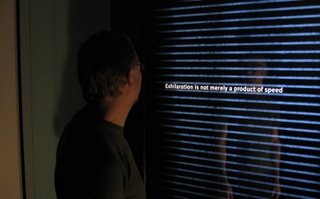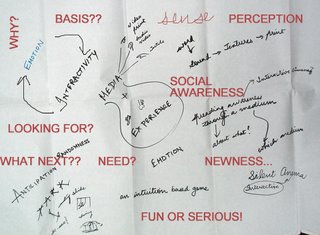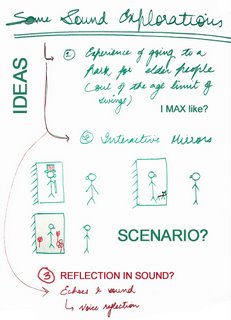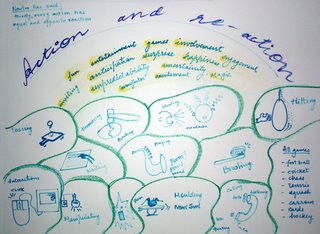Interestingly done, almost an immersive environment.. check the link http://www.interactivemirror.net/
here is some of the matter from there.
They also have a video on the website, which can be checked.

The objective was to create a unique and fascinating interactive experience, engaging consumers at larger-than-life size and immersing them in the presentation. The interactive mirror shares the brand’s philosophy of using design to create a more emotionally rich experience and demonstrates how design is manifest in Infiniti vehicles.
The installation consists of three 8’ high by 3.5 ’ wide panes of mirrored glass placed side by side, each displaying rear-projected content from a high-lumen projector. A user standing in front of the mirrors has the unusual sensation of seeing their reflection and the projected content simultaneously.
Sensors embedded in the structure above each pane register when a user reaches out to a “hot spot,” allowing users to navigate the projected content without ever needing to touch the “screen” or press a “button.” This combined with scale of the system, and the projected image being captured on the inside surface of the glass creates a unique spatial experience where the content appears organically before the viewer. An additional sensor recognizes when a user approaches and automatically activates the mirror to welcome the visitor.
To take advantage of the spatial experience, content was designed in three dimensions, using scale, motion and depth perspective to make the user feel like she is immersed in and moving through the communication, not merely viewing it. Integrating full motion video, Flash animation, motion graphics, still photography, dynamic type and responsive sound, the content enables users to explore the guiding vision of the brand. This includes a broad sampling of ways this vision has transformed how Infiniti vehicles look, feel and move, as well as how each Infiniti model is an expression of the brand promise.
Creation of the Infiniti Interactive Mirrors and their content was a collaborative effort. The George P. Johnson Company along with Nikolai Cornell of madein.la developed the exhibit and the technology concept. Phil van Allen of Commotion New Media designed, developed and integrated the sensor system. The Designory directed, designed and wrote the content. And Mindflood was responsible for motion graphics design as well as video integration and user-interface programming for the Flash platform.




